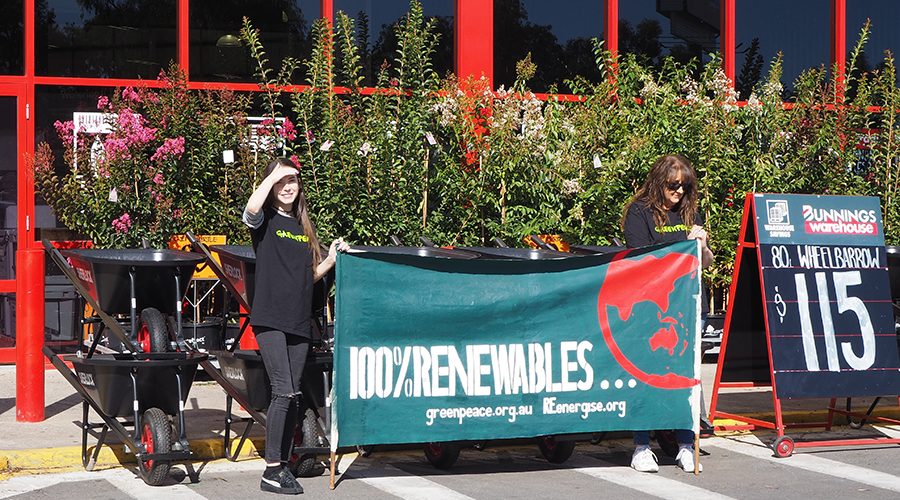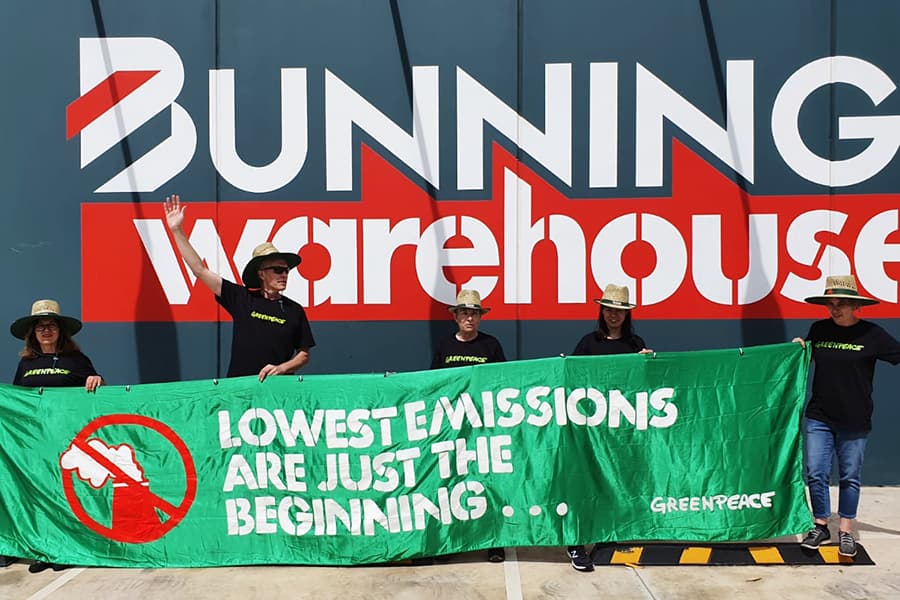Bunnings has announced its plans to source 100% renewable electricity by 2025, to help achieve its target of net zero Scope 1 and 2 emissions by 2030.
Bunnings has had a strong focus on energy efficiency for many years, particularly through the installation of LED lighting and solar PV systems. Energy efficient, LED lighting is now a standard inclusion in all new store builds and the existing Bunnings store network is being gradually upgraded to LED lighting throughout. More than 150 sites in the Bunnings network currently use LED lighting, which reduces a store’s energy consumption by more than 20%.

Since 2014, Bunnings has installed solar PV systems across its store network and now has more than 70 solar PV systems across Australia
Bunnings has also worked to develop renewable energy solutions over many years. This work began in 2009 with a solar PV system at Bunnings Belconnen and wind turbines at Bunnings Port Kennedy and Bunnings Rockingham.
Since 2014, Bunnings has installed solar PV systems across its store network and now has more than 70 solar PV systems across Australia, covering in excess of 28,000m2 of roof space and generating up to 30% of a store’s energy needs.

More than 150 sites in the Bunnings network currently use LED lighting, which reduces a store’s energy consumption by more than 20%
Bunnings Alice Springs also has added battery storage as part of its solar PV system, which now provides up to 80% of the store’s energy needs.
“We recognise that business has an important part to play in reducing carbon emissions and addressing climate change,” said Mike Schneider, Bunnings’ Managing Director. “This is a journey we started some time ago, but we know that we have a long way to go.
“We are absolutely committed to finding solutions that benefit our business, our customers and the environment, and we are excited about what the future looks like.”

Lindsay Soutar, Reenergise Campaign Director at Greenpeace Australia Pacific, welcomed the decision, stating: “Bunnings is known for its lowest prices, but now lowering emissions is just the beginning. Committing to 100% renewable electricity and net zero emissions is a great win for the climate and for helping create local future-proof jobs in renewables.”
Over the coming year alone, Bunnings has plans to build another 20 new solar PV systems and upgrade the capacity on ten of the existing solar PV systems in its network. It will also develop new pathways to reduce its reliance on traditional energy by transitioning to renewable sources.




















